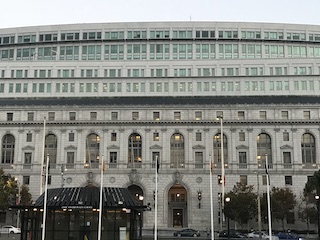The kill zone theory is an often-misunderstood explanation of imposing liability for attempted murder when someone shoots into a crowd. It was first adopted in California in People v. Bland (2002) 28 Cal.4th 313, but originated in Maryland nine years earlier in Ford v. State (1993) 625 A.2d 984, 997-1001 as an attempt to address transferred intent in cases of murder and attempted murder.
In a murder case, if someone intended to kill one person, but killed someone else instead, the law says his murderous intent was transferred from the intended victim to the actual victim. People v. Stone (2009) 46 Cal.4th 131, 139. However, if defendant kills the intended victim and accidentally kills others standing nearby, he is guilty of killing all that he killed. People v. Souza (2012) 54 Cal.4th 90, 120.
However, when a single act is charged as an attempted murder on the lives of two or more people, the intent to kill must be examined independently as to each alleged attempted murder victim; an intent to kill one victim cannot be transferred from one intended victim to another because the intent in attempted murder is specific intent.
The kill zone theory was adopted to address the situation in which a killer intends to kill one person, as well as all the people in the intended victim’s immediate vicinity, to ensure the death of the intended victim. In such a case – and only in such a case – the kill zone instruction may be used and the defendant may be guilty of attempted murder of anyone in the kill zone.
 Court of Appeal First Appellate District San Francisco
Court of Appeal First Appellate District San Francisco
Instructing a jury on this can be tough. Last year, in 2019, the California Supreme Court clarified the theory in People v. Canizales (2019) 7 Cal.5th 591. It explained, “the kill zone theory for establishing the specific intent to kill required for conviction of attempted murder may properly be applied only when a jury concludes:
- The circumstances of the defendant’s attack on the primary target , including the type and extent of force the defendant used, are such that the only reasonable inference is that the defendant intended to create a zone of fatal harm – that is, an area in which the defendant intended to kill everyone present to ensure the primary target’s death – around the primary target; and
- The alleged attempted murder victim who was not the primary target was located within that zone of harm. Taken together, such evidence will support a finding that defendant harbored the requisite specific intent to kill both the primary target and everyone within the same zone of fatal harm.
In Canizales, a woman was shot dead in a gang-related shooting at a block party, but she was not the intended target. The California Supreme Court reversed the attempted murder convictions, concluding the jury improperly relied upon the kill zone theory in reaching its verdict.
Indeed, as might be suspected, defense attorneys are uneasy with such a broad brush, liberal approach toward allowing a finding of attempted murder when, sometimes, defendant’s intent was not so reckless at all.
Indeed, in the Alameda County case of People v. Clem Thompkins, the First Appellate District reversed five attempted murder convictions based on a kill zone jury instruction that was not factually supported.
Mr. Thompkins and Lamar Fox were members of a criminal street gang, looking to shoot rival gang members at Sweet Jimmie’s bar and restaurant in Oakland, California. The shooting was in revenge for an earlier incident involving the rival gang. The shots from Thompkins and Fox left two people dead and five wounded. Thompkins and Fox were convicted of two counts of murder and five counts of attempted murder. The jury found Thompkins to be the shooter and Fox as the accomplice.
After the verdict, at sentencing, Fox told the judge that he was the actual shooter, not Thompkins, and that Thompkins did not know that Fox was going to open fire.
Based on Fox’s confession and arguing that the kill zone jury instruction was improper, Thompkins filed a petition for a writ of habeas corpus, which was denied by the judge.
Thompkins then appealed to the First Appellate District. The First Appellate District agreed that the kill zone instruction was not factually based. It pointed to argument by the prosecutor, wherein he said, “The intent was to kill whoever was inside the line of fire. This is sometimes referred to as the kill zone.” This was faulty because the kill zone theory requires a specific target. Thus, the five attempted murder convictions were reversed.
The citation for the First Appellate District Court ruling discussed above is People v. Clem Thompkins (1st App. Dist., 2020) 50 Cal. App. 5th 365, 264 Cal. Rptr. 3d 186.
For more information about the kill zone theory, please click on the following articles:
 Court of Appeal First Appellate District San Francisco
Court of Appeal First Appellate District San Francisco